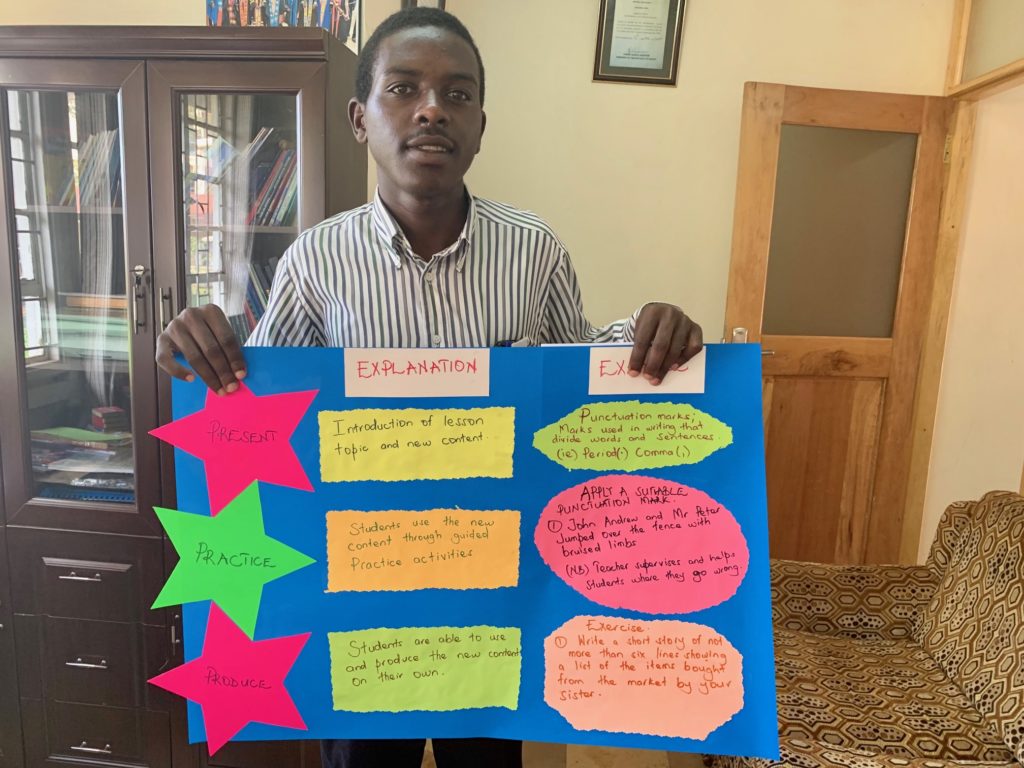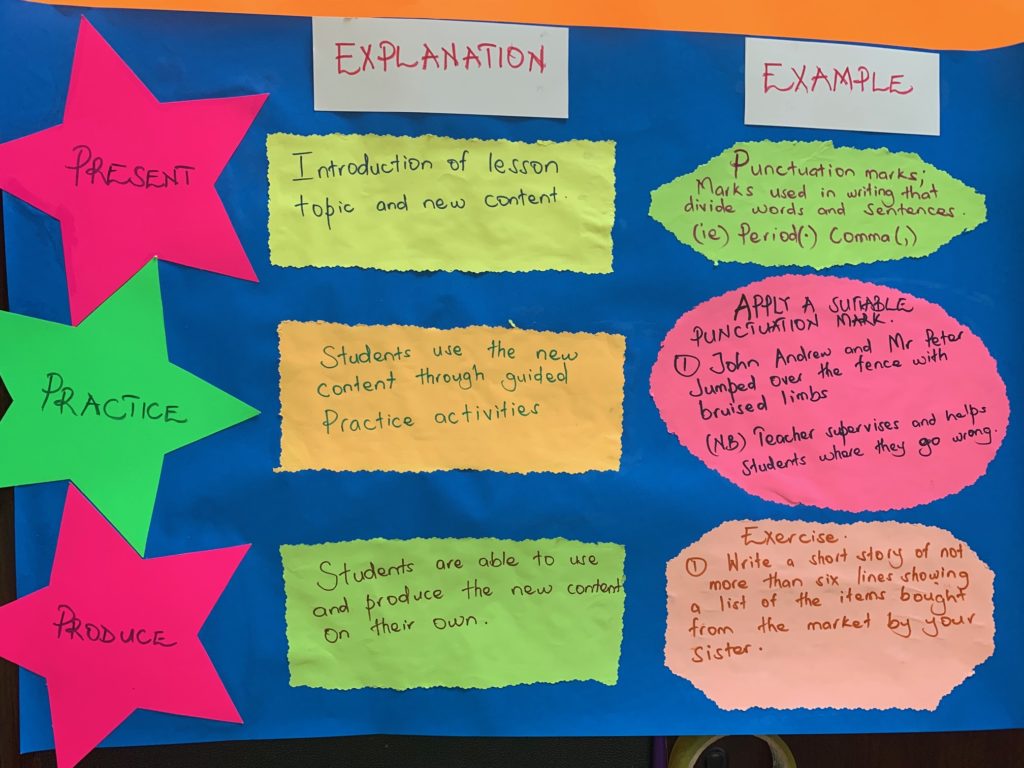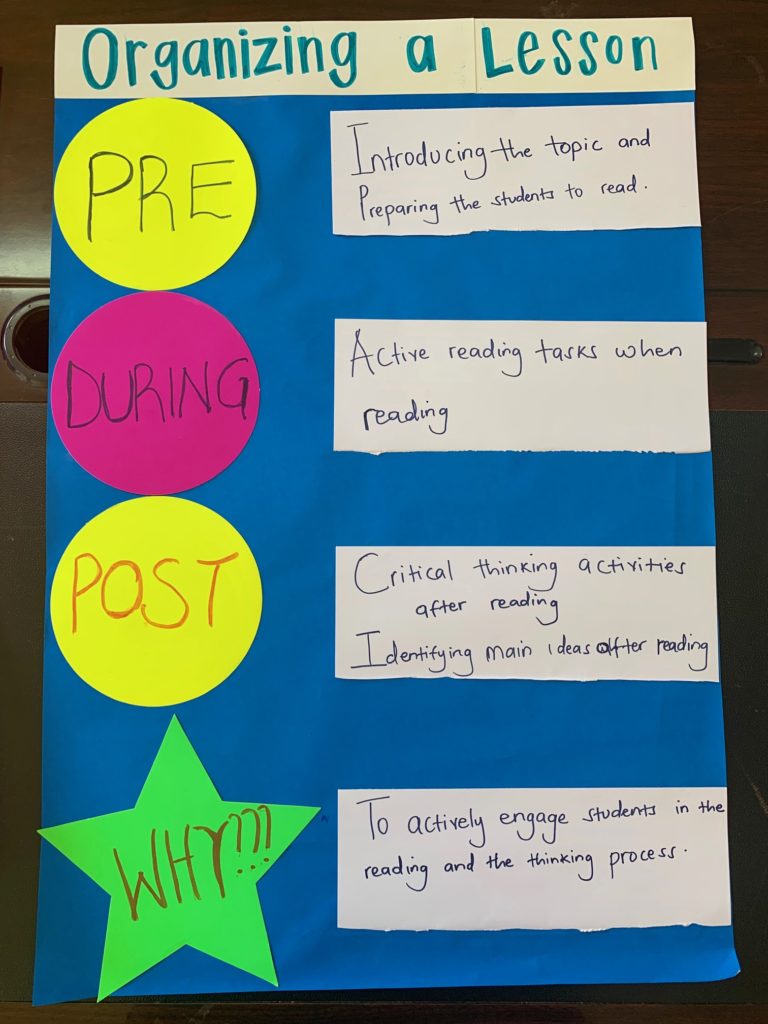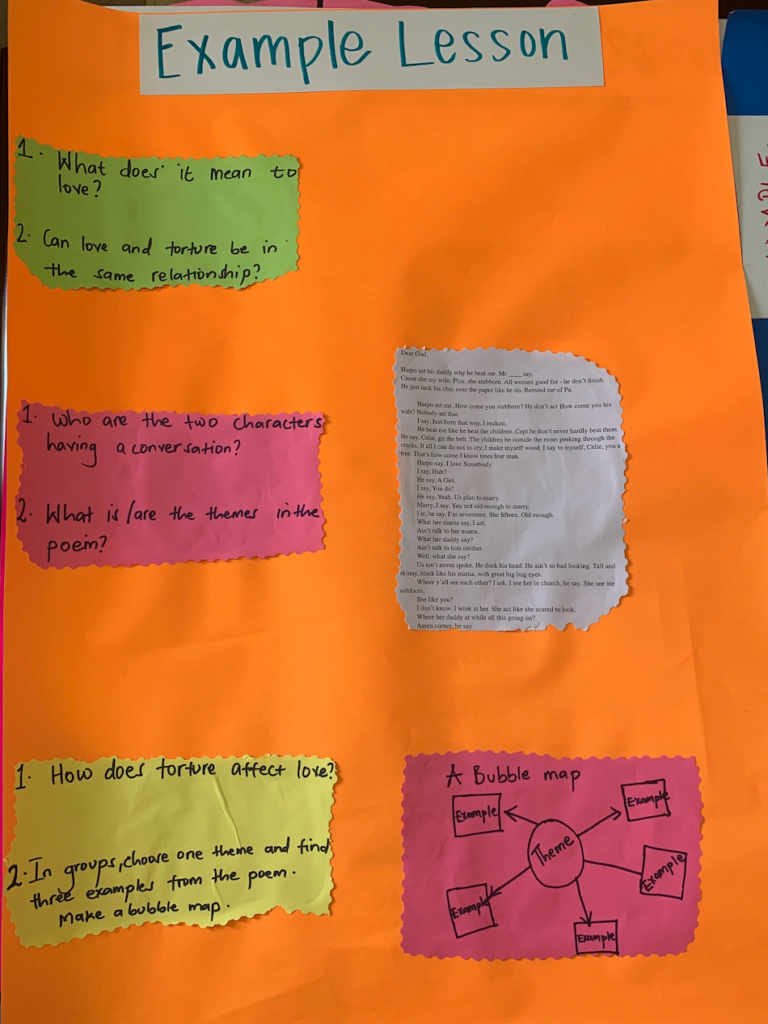Easy as 1-2-3… It’s PPP!
This post: explanation of PPP and Pre-During-Post teaching strategies for language teaching.
Okay, I completely admit that I sang the title, “Easy as 1-2-3, it’s PPP!” in my language development class to the tune of Jackson 5’s “ABC”. It’s safe to say my students generally think I’m a crazy lady.
I’ve only taught a few classes so far, but I’ve been trying to teach some easy, practical ways of organizing a lesson. I think these skills are so important because it allows a teacher to walk into any classroom with any content, and have an idea of how to present the material to students. It doesn’t always mean your lesson is perfectly organized, prepped, or planned. I’m learning more and more how not-perfect a class has to be, but if a student is guided, encouraged, and able to interact with content in a meaningful way, then it was a successful class.
I think that’s going to be my continual lesson here in Uganda for myself! I fully raise my hand and admit to be an over-planner.
Strategy #1: PPP = Present, Practice, Produce
– using grammar as an example:
Present: Introduction of the grammar rule/concept, giving examples and explicit instruction. Personally, this should be a small percentage of the entire class time. Devote more time to practice & produce.
Practice: Students work through guided practice activities with the grammar rule. These should be “scaffolded”. Meaning, the first practice activity should be simpler and require less production (error-correction, fill-in-the-blank, reading a conversation). Practice activities should slowly involve more language and production from the students.
Produce: Students use the grammar concept in a productive activity. Meaning, they are now required to produce the language on their own, with less guidance from the teacher. Examples: write a sentence, speak about their life in the correct grammar tense, write a role-play).
Practice Example: Change the sentence from simple present to present continuous.
I sit on the floor. ___________________
Practice Example #2: Correct the error in the sentence. Make the sentences present continuous.
I am eat my lunch.
Production Example: Write a 5-6 line conversation about what you and your partner are doing right now.
A language education student made this poster about PPP: So proud of him!


Strategy #2: Pre-During-Post
My secondary education students have been learning about pre-during-post activities for reading texts and reading lessons. When teachers ask students to read a new text, students must actively be engaged in the reading process. To do this, there should be activities before, during, and after the reading.
Pre: Get students thinking and talking about a topic before reading. This can be through many ways: conversation questions, introducing some new vocabulary needed for the text, predictions, showing a picture from the text and discussion the topic or predicting the topic, and much more.
During: Give student a specific goal for reading the text. Do you want your students to read for main idea? Read for specific details? Read for vocabulary? Read for figurative language? Do you want them to annotate?
- Personally I like to do one read through for just main-idea. I ask the students to read for the main idea and to high-light or underline the sentence or sentences that helped them determine the main idea.
- Then, I ask them to do something deeper: character analysis, vocabulary, theme.
Post: Students use the text to critically think and complete a practice or productive activity based on the objective of the lesson.
For example, the education students focused on a poem, and wanted students to discuss the themes of the poem. Then, they wanted the students to choose one them, and find evidence in the poem to support their theme using a bubble-map.
Here are their posters:


I was SO proud of the students hard work. This will be a continual exercise they’ll do. I won’t always have them do posters, but creating practice lessons from strategies and methods is so important!
Happy Teaching!
The ESL Girl
